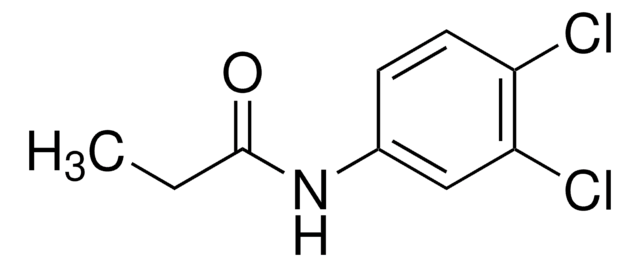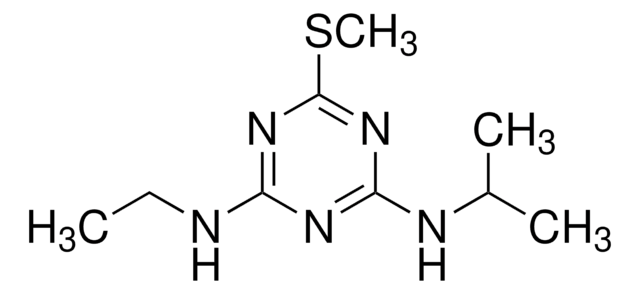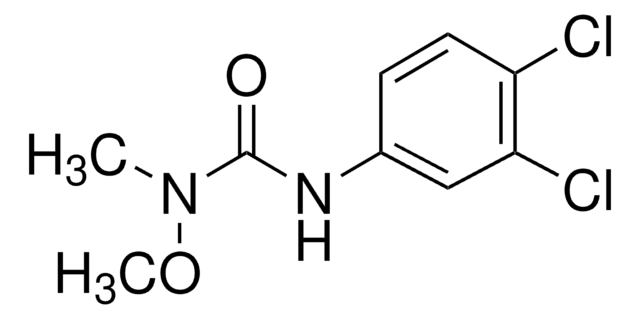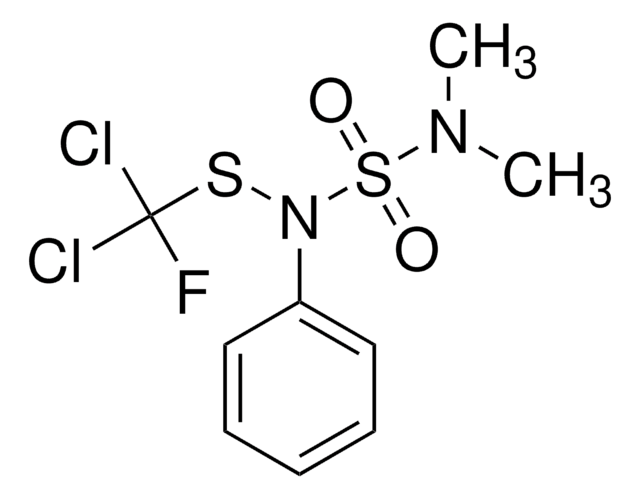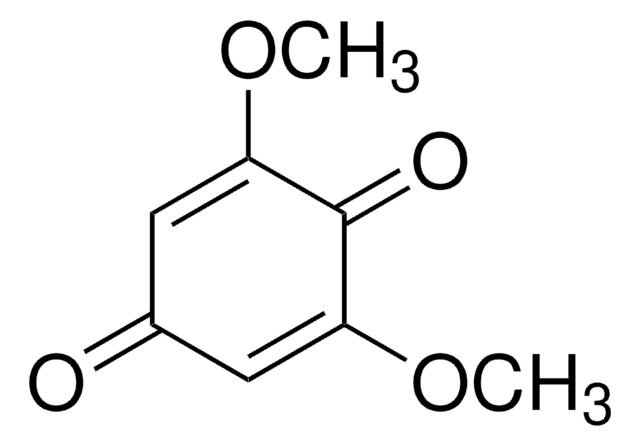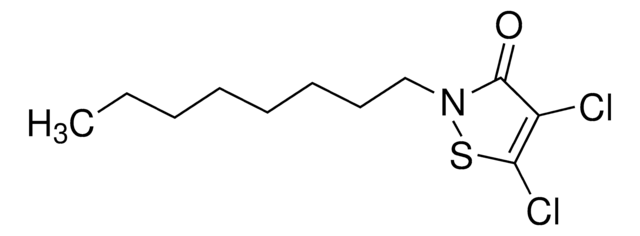D2425
Diuron
≥98%
Synonym(e):
3-(3,4-Dichlorphenyl)-1,1-dimethyl-harnstoff
About This Item
Assay
≥98%
Form
powder
SMILES String
CN(C)C(=O)Nc1ccc(Cl)c(Cl)c1
InChI
1S/C9H10Cl2N2O/c1-13(2)9(14)12-6-3-4-7(10)8(11)5-6/h3-5H,1-2H3,(H,12,14)
InChIKey
XMTQQYYKAHVGBJ-UHFFFAOYSA-N
Angaben zum Gen
human ... EPHX2(2053)
mouse ... Ephx2(13850)
Suchen Sie nach ähnlichen Produkten? Aufrufen Leitfaden zum Produktvergleich
Verwandte Kategorien
Anwendung
- The Fabrication and Property Characterization of a Ho(2)YSbO(7)/Bi(2)MoO(6) Heterojunction Photocatalyst and the Application of the Photodegradation of Diuron under Visible Light Irradiation.: This research investigates a novel photocatalyst′s ability to degrade diuron under visible light, offering insights into sustainable environmental remediation technologies (Hao and Luan, 2024).
Signalwort
Warning
H-Sätze
Gefahreneinstufungen
Acute Tox. 4 Oral - Aquatic Acute 1 - Aquatic Chronic 1 - Carc. 2 - STOT RE 2 Inhalation
Zielorgane
Blood
Lagerklassenschlüssel
11 - Combustible Solids
WGK
WGK 3
Flammpunkt (°F)
Not applicable
Flammpunkt (°C)
Not applicable
Persönliche Schutzausrüstung
Eyeshields, Faceshields, Gloves, type P3 (EN 143) respirator cartridges
Analysenzertifikate (COA)
Suchen Sie nach Analysenzertifikate (COA), indem Sie die Lot-/Chargennummer des Produkts eingeben. Lot- und Chargennummern sind auf dem Produktetikett hinter den Wörtern ‘Lot’ oder ‘Batch’ (Lot oder Charge) zu finden.
Besitzen Sie dieses Produkt bereits?
In der Dokumentenbibliothek finden Sie die Dokumentation zu den Produkten, die Sie kürzlich erworben haben.
Kunden haben sich ebenfalls angesehen
Unser Team von Wissenschaftlern verfügt über Erfahrung in allen Forschungsbereichen einschließlich Life Science, Materialwissenschaften, chemischer Synthese, Chromatographie, Analytik und vielen mehr..
Setzen Sie sich mit dem technischen Dienst in Verbindung.



